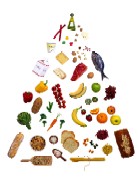

By comparing characters to food, we determine how they were found, gathered, or killed from the story, how they will be cooked or prepared in the dramatic structure, how they will be sequenced in time and space or displayed on the dinner table, how they will be eaten, digested, eliminated, and metabolized by the audience or reader. So characters as food relate directly to story structure, genre, and audience. But there are other ways of comparing them.
Objects, Musical Instruments, Animals: Act, Hear and Feel
Food analogies aren't the only ways to create, develop, and orchestrate your characters. By comparing them to household appliances, you get a clear idea of how they act in a situation. A scissor personality is different from a vacuum cleaner,  a broom, a washing machine, or a toilet bowl cleaner. Once you see how your characters clean up you may be better able to predict their actions in a scene.
a broom, a washing machine, or a toilet bowl cleaner. Once you see how your characters clean up you may be better able to predict their actions in a scene.
 Not everyone speaks the same way.
Not everyone speaks the same way.  Resonance, pitch, timbre, phrasing and vocabulary distinguish each character so a useful exercise is to assign a musical instrument to each character's voice. A melodious harp plays differently on our ears and psyches than a relentless drum, a schreechy violin, an ethereal flute, a banging piano,
Resonance, pitch, timbre, phrasing and vocabulary distinguish each character so a useful exercise is to assign a musical instrument to each character's voice. A melodious harp plays differently on our ears and psyches than a relentless drum, a schreechy violin, an ethereal flute, a banging piano,  a twanging guitar,
a twanging guitar,  or a new age synthesizer. Every time you create dialogue, hear the sounds of these distinct instruments and let your characters respond accordingly.
or a new age synthesizer. Every time you create dialogue, hear the sounds of these distinct instruments and let your characters respond accordingly. 
In drama, we want our characters to feel instinctively and act with power. 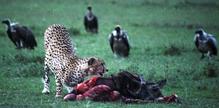 Therefore, if you assign an animal to each character, you will know how they fight, eat, have sex, and escape. A snake curls up lasciviously on the rock in the sun but will stand up, hiss, and bite if attacked;
Therefore, if you assign an animal to each character, you will know how they fight, eat, have sex, and escape. A snake curls up lasciviously on the rock in the sun but will stand up, hiss, and bite if attacked; a mosquito is almost invisible until it delivers its itchy bite; a fish swims fluidly, seeking food everywhere, even on the end of a lethal hook; the gentle, slow-moving elephant can crush life with a single ponderous step; the gazelle is beautiful to look at, but if you approach, it will run away with lightning speed.
a mosquito is almost invisible until it delivers its itchy bite; a fish swims fluidly, seeking food everywhere, even on the end of a lethal hook; the gentle, slow-moving elephant can crush life with a single ponderous step; the gazelle is beautiful to look at, but if you approach, it will run away with lightning speed.  The wormy caterpillar metamorphoses into a beautiful butterfly.
The wormy caterpillar metamorphoses into a beautiful butterfly.  The lizard blends into its environment.
The lizard blends into its environment.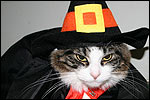 Your pet cat can be dressed up for Halloween.
Your pet cat can be dressed up for Halloween.
Before you write a scene, assemble your characters, know what food, object, instrument, and animal they are, understand the plot objectives of the scene, but let the characters surprise, based on their essences.
Serials, soaps and sitcoms have the same characters returning every day, changing superficially and reacting in somewhat predictable patterns.
Archetypes are classic character types such as the Shadow, the Hero, the Shapeshifter, the Mentor, whose essence is related to the role they play in the dramatic journey.
Stereotypes are contemporary character types flattened and exaggerated to fit a socially identifiable role. They work best in satire, slapstick, or to provide comic relief in tragedy. If the hero of your transformational drama is a stereotype, you are in trouble.
Three-Dimensional Characters
Height, width and volume? This is a crazy nomenclature but what it means is that characters have dimensions and depth; they break stereotypes, they often act unpredictably, they have many sides to their personality, they have secrets that they hide or lie about, and they change as the story unfolds. A main character may have a kaleidoscopic personality, sounding like a violin in one scene, or a harp in the next, acting like scissors with a girlfriend, but a vacuum cleaner with his professor.
Relationships
In drama, the character is only as good as its relationship to others and to the plot. Food can't be digested without water within and without, therefore, you must examine your characters for their strengths, weaknesses, needs, desires, and objectives that will force them to fit themselves into others like a jigsaw puzzle. As a liquid, water is different from wine or coffee.
Transformation
In Part Three we will look at how characters are transformed by the dramatic structure of the work, the way meat is cooked in the oven. The protagonist is usually the character who is cooked the most.
Objectives
In real life we may have many objectives or goals, some which may never be fulfilled. Sometimes we get so disappointed we stop fighting and just roll with the punches or submit to the blowing wind with faith or que sera sera. Therefore it may seem unnatural to sustain a protagonist's or antagonist's single objective relentlessly through an entire story. In real life many believe more in destiny, luck chance or God than in the power of individual will. We can be responsible for the small things, the daily tasks, but at any moment we can get sick, or be subject to an earthquake, hurricane, fire or whatever. These deus ex machina events don't always create the best drama. In real life there are very few devils or angels. Most people are a mixture of the two, capable of evil and good, and the most self-righteous people can usually do the most harm.
Some people do evil because their brains are so brilliant they explode and go haywire; others because they dissociate and can't imagine, killing as if a game from a distance enjoying the power and control like Richard III; some people like the sexuality of killing and become addicted to that; some people are fascinated with death and want to martyr themselves. Some people are sorry for what they did, some don't feel what they did was wrong, and some are happy to be branded evil. Satan was discharged from heaven when he disobeyed. He was one of the angels, as righteous as any.
Throughline: Macbeth wants so badly to be king he is willing to murder to get it. Jan wants so badly to be with Jalal she is willing to pursue him to outer space. Jalal wants so badly to be with Jan that he compromises his jihadhi plot.
The problem with writing is that we can subconsciously put ourselves in the protagonist's position and create a wish fulfillment scenario that would make us reluctant to make things hard for our characters, to maim or kill them, to grind them against each other. We live in an ideal world that needs conflict so what to do? I could do the elevator irritation exercise. Take each character and lock them in an elevator with another for an indefinite period of time. Then make hellish triangles of lethal combos. Screenwriting is the tip of the iceberg, but good readers know whether or not there is an iceberg or just a floating piece of ice.
Story isn't the same as structure.
To milk a scene or live in the moment is so different from planning a structure. You must let the moment take you where you don't want to go. You can always revise a structure. The unfolding of a drama is a striptease: if you just pull all your clothes off at once, you eliminate suspense, mystery, and the ability to tease the audience, to prolong their final satisfaction. Narrative, story and structure are different things.
As with research papers, writers are not able to ask enough irritating questions early in the process regarding motivations, objectives, interactions, conflicts, results. Writing is problem solving but one must challenge oneself with tough problems in the beginning. We like to be optimistic, superficial, cheerful, avoid conflict in favor of peace in many of our daily interactions, but to create drama we have to twist every situation the way Socrates would to see if it is the best. If the story is personal, we may want to have the antagonist or the chief ally become the protagonist so that we don't just project our victimization.
American Beauty isn't really a mixed genre movie; rather it is an American Tragedy which mitigates the depressing nihilism of tragedy with jokes and humor and character transformations so that when the protagonist dies, it almost seems like a happy ending. This film makes good use of Images and Animals. Angela wants to be extraordinary but her animal is a frightened deer; Lester wants to be alive but his animal is a caged drunken bird of some kind; his wife Carolyn wants to be rich and socially prestigious but her animal is a hysterical hyena; the Nazi neighbor wants to be a powerful American soldier but his animal is a starved dog; his son wants to be the artist, the voyeur and his animal is the real gun; the daughter wants to be the favorite daughter but she is the raging tigress.
Character Profiles
Age
Looks
How they Change
Wardrobe
Body language and mannerisms
How they talk-sound of their voice
Biology, aches and pains
Musical instrument/Animal/Household appliance
Biography-where lived, degrees, jobs
Daily schedule
Exact behavior at work or school
Objectives
Fantasies
Dreams and Nightmares
Life attitude: Incurable romantic
Major delusion
Major secret
How they lie
Major embarrassment
What they want from the other characters
Whom do they love the most, hate the most?
What could make them cry?
What is the worst thing they could do?
What is their fantasy of home?
Bedroom: what it looks like and how they sleep
Sex life
Dining/living room what it looks like and what and when they eat
Entertain-How?
How do they do housework or not?
How do they walk, use gravity-lightly, heavily, sideways, gingerly, confidently
Exercise outdoors-what do they do in the Gunks?
How do they take care of their homes?
What kind of car do they drive, or not?
How would their obituary read?
On the shades of hot to cool, what color are they?
What kind of politics do they subscribe to?
Why? And does this change?
How do they groom themselves and what would they like to look like?
Sense of humor
Religious faith
Onion for Character Development
1) Resume, quantitative facts of age, statistics
2) Personality
3) Chief motivation
4)Lies, deceit
5) Secrets, guilt and shame
6) Unconscious, layers of disgust
7) Seismic eruption-what does it take? What is the worst thing the person can do?
8) Difficult choices and decisions
9) Transformation through action, religion, beliefs
10) Back to chief objective
11) Changed personality
12) Changed resume
13) Role in plot and story
Character transformation is different in different cultures. Americans want their characters to get better, not older and weaker as they do in real life. They have a puritan need to learn something from the story to make their own lives better-- how to give up an addiction, fight an external or internal enemy and win, get a better job, resolve their relationship problems. But in real life the law of entropy usually has people getting older, fatter, weaker, losing their minds and their bank accounts, their dignity and their hopes. In Cairo Trilogy characters peak with their marriages and births or even martyrdoms but very few people have the pollyanna triumphs of American cinema.
Americans like realism but not depressing naturalism. They like to leave the cinema or put the book down with renewed energy and hope to conquer their own troubles. They also like to be entertained and while they expect these moral lessons embedded in their stories they don't want to work too hard to learn things. They read or watch primarily for the twists and turns of the story, the amusing or heart-wrenching actions of the characters, the sex and violence that keeps things moving. I read novels from other cultures and historical periods to learn about them but these are rarely popular.
The Cairo Trilogy is depressing to Americans but hopeful to Arabs because it reaffirms the repetitious cycle of family life and the omnipotent unity of Allah. Individuals don't need the triumphs necessary in Western literature.
Different cultures require different levels of conflict, honesty, politeness and vulgarity. Americans may be disgusted by the two-faced behavior of Ahmad in Cairo Trilogy, the stern patriarch who rules his family like a tyrant and the drunk philanderer who is the life of the party. However Arabs may be disgusted by the outspoken, in-your-face Americans who tell it like it is spitting out words like shit, fuck, and asshole.
This will be about writing a novel as well-- writing long pieces. First you research and brainstorm, find your world, characters, setting, but don't go too far without your story. Then you write plotpoint and write a screenplay, even if the structure is unconventional. Then you do more detailed research on characters, locations and ideas to flesh it out into a novel. Then you write the novel in a linear fashion to avoid going nuts with rewrites. Even when doing free writing, dream sequences, whatever, you are still doing it in order. Then you edit as a job, slowly, patiently, expecting nothing, no judgements, just fixintg words. Don't throw anything out unless you are repeating the same thing. This takes time so don't expect fast results.
Journalists carve stories out of the chaos of reality-- it can be done.
Protagonists are the protein--they build muscle, repair tissue, require lots of water to digest, and have the most long lasting effects on the audience's metabolism.
Proteins can be meat, fish,  nuts,
nuts,  legumes, or dairy products.
legumes, or dairy products. 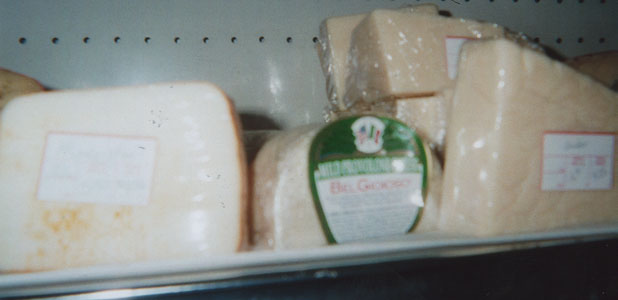
If your main character is modeled on milk,  how would that differ from a steak protagonist?
how would that differ from a steak protagonist?
Junk food is the antagonist because it slowly poisons us.
Fresh fruits and vegetables are the friends, allies, and mentors. There is a difference between the refreshing but watery taste of a cucumber, the challenging crunch of a cauliflower or broccoli stalk, and the sweet, squishy sensation of a ripe tomato.
There is a difference between the refreshing but watery taste of a cucumber, the challenging crunch of a cauliflower or broccoli stalk, and the sweet, squishy sensation of a ripe tomato.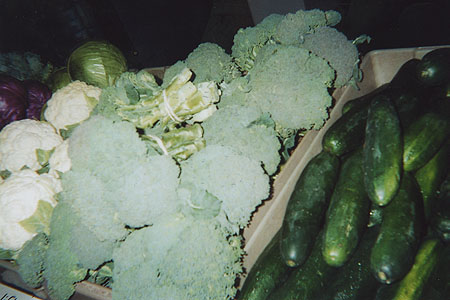
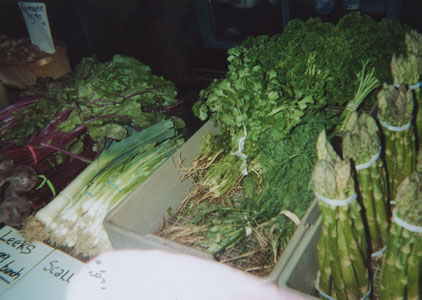 Some vegetables, like asparagus, shallots and beets, taste better cooked, i.e. modified by intense dramatic structure. You know what that means: those are true friends in times of trouble.
Some vegetables, like asparagus, shallots and beets, taste better cooked, i.e. modified by intense dramatic structure. You know what that means: those are true friends in times of trouble. 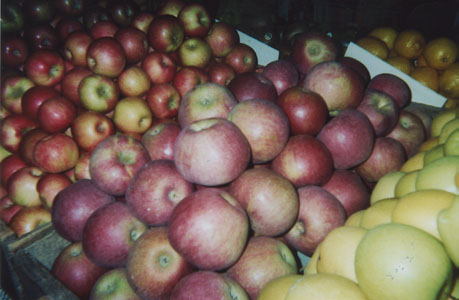 Then there are the friends who are as sweet as a ripe apple, or as succulent as a bunch of grapes.
Then there are the friends who are as sweet as a ripe apple, or as succulent as a bunch of grapes. 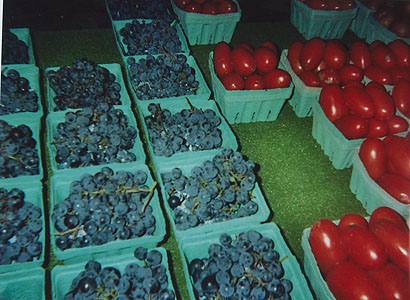 Note that any of these fruits or veggies could still act like a broom, sting like a bee, or sound like an accordion in scenes. That is what gives characters depth and unpredictability.
Note that any of these fruits or veggies could still act like a broom, sting like a bee, or sound like an accordion in scenes. That is what gives characters depth and unpredictability.
Grains, rice, pasta, starches are the people who make up the society.or glycogen. The fuel for action. The society. 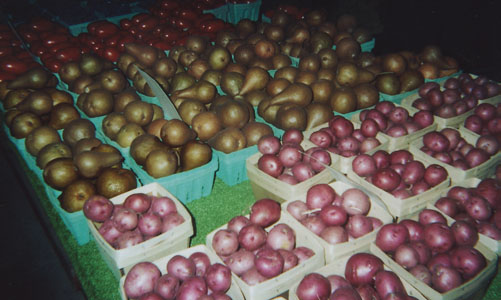
 Our carbohydrates relate to our story because some veggies or starch or plucked from vines or trees, while others are dug up from the soil. Remember to clean those root vegetables thoroughly unless you are writing a memoir.
Our carbohydrates relate to our story because some veggies or starch or plucked from vines or trees, while others are dug up from the soil. Remember to clean those root vegetables thoroughly unless you are writing a memoir. 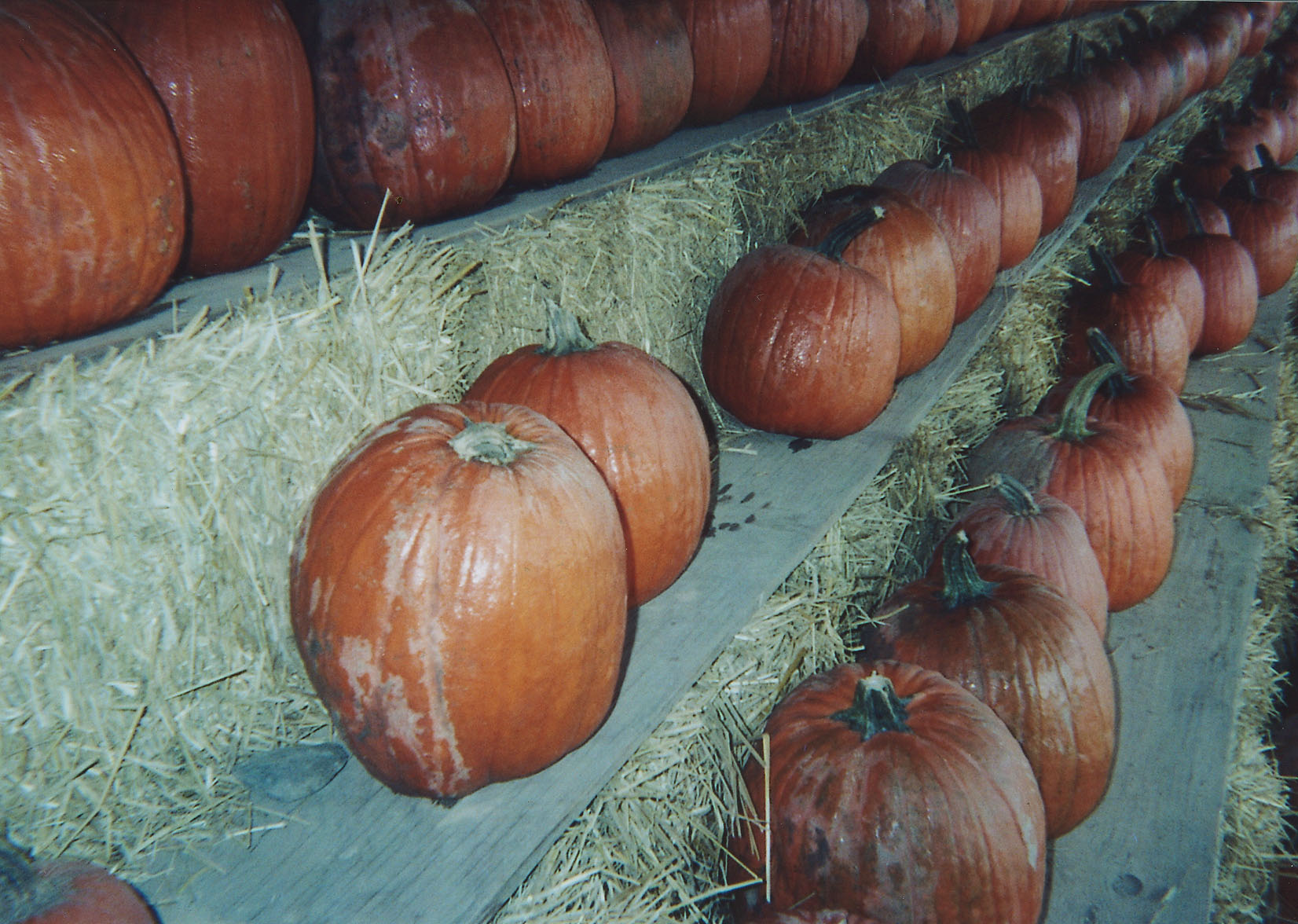 Some carbohydrates like pumpkins have multiple uses as a dinner starch, a pumpkin pie, or a Halloween pumpkin!
Some carbohydrates like pumpkins have multiple uses as a dinner starch, a pumpkin pie, or a Halloween pumpkin!
Even though we may not want to get fat, we need fat in our diet to lubricate the tissue, provide energy, and improve organ function. In stories, fat can provide a love interest in action-adventure, comic relief in tragedy, or just that delicious padding that makes our scenes more seductive.
There is a difference between healthy fats like olive oil  and ice cream.
and ice cream.
 We drink bottled or tap water, fresh or canned juices, and sometimes less healthy liquids such as alcohol
We drink bottled or tap water, fresh or canned juices, and sometimes less healthy liquids such as alcohol 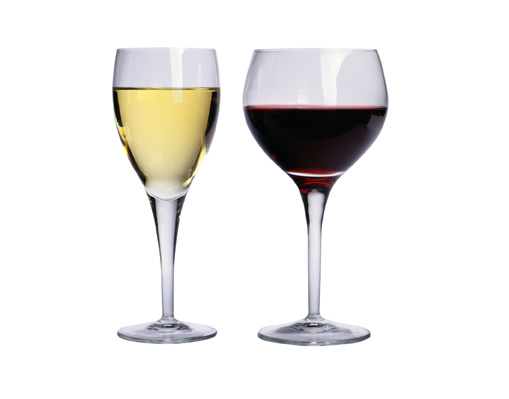 or coffee. They all affect our assimilation and digestion differently. A social event fueled by liquor creates a different ambiance from one where only coffee is served. How does a bar differ from Starbucks? Or a hiking trip where people just drink water?
or coffee. They all affect our assimilation and digestion differently. A social event fueled by liquor creates a different ambiance from one where only coffee is served. How does a bar differ from Starbucks? Or a hiking trip where people just drink water?
THE GAP: You can fix a lot of writing that has a bad overall structure by working on the gap between expectations and result, where the characters harbor conflicting objectives, needs from the people in the scene so they don't talk at each other, secrets that must cover up with lies in order to flatter, persuade and cajole. Then there is the relative knowledge of the audience so that mystery, suspense and surprise are created through the gap.
Interaction and Dialogue
While the following may be okay in some instances, they cannot substitute for drama: 1) Sounding off: So much of our daily interaction is lyrical or bitching about life, our problems, worrying about what we should or shouldn't do, reliving guilt from the past with another person in such a way that we are not always conscious of what we want from that person, if anything. This can waste time in a novel or screenplay although it can reveal character if used as motivations for objectives and actions. Memoirs are full of these lyrical laments. It's fine in poetry when cased in beautiful language but it can get really tedious if allowed to stalemate a story. 2) Exposition: explaining what already happened either with a character or the narrator. Some of this is necessary but it can't take over the scene. 3)Utilitarian intercourse: which means the mundanity of daily interaction--greeting, shopping, going to the bank, driving the car, taking the subway. My students tend to have entire scenes just going to a bar or waking up in the morning. It's okay to start in these locations with these interactions but the characters must get into a dramatic situation and the narrator or camera must develop a real story. 4) Gratuitous violence: another easy way out is to have someone shot without a sufficiently dramatic situation or to have warlike actions without the emotional conflict, unless a satire is being developed. To milk the present drama must be created: two or more characters want conflicting things from each other, related to their throughlines. In real life we often avoid these situations or get out of them when they occur, as they are uncomfortable.
Character Orchestration 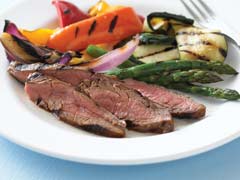 Everyone can't be a star, nor have the same will, energy, voice, body, and commitment. If you only eat protein, you will get kidney disease; if you only eat sugar, diabetes. Audiences require nutritional balance--all kinds of interesting characters, but a hierarchy where the protagonist and the chief antagonist take up most of the story. You don't have to cook fruits and vegetables as long as meat. Bread bakes for a long time, but at a relatively low temperature.
Everyone can't be a star, nor have the same will, energy, voice, body, and commitment. If you only eat protein, you will get kidney disease; if you only eat sugar, diabetes. Audiences require nutritional balance--all kinds of interesting characters, but a hierarchy where the protagonist and the chief antagonist take up most of the story. You don't have to cook fruits and vegetables as long as meat. Bread bakes for a long time, but at a relatively low temperature.